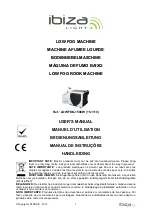
SEWING BUTTONHOLES AND BUTTONS
—
—
—
—
—
—
—
—
—
—
—
—
—
—
—
—
—
—
—
—
—
—
—
—
—
—
—
—
—
—
—
—
—
—
—
—
—
—
—
—
—
—
—
—
—
—
—
—
—
—
—
—
—
—
—
—
—
—
—
—
—
—
—
—
—
—
—
—
—
—
—
—
—
—
—
—
—
—
—
—
—
—
—
—
—
—
—
—
—
—
—
—
—
—
—
—
—
—
—
—
—
—
—
—
—
—
—
—
—
—
—
—
—
—
—
—
—
—
—
—
—
—
—
—
—
—
—
—
—
—
—
—
—
—
—
—
—
—
—
—
—
—
—
—
—
—
—
—
—
—
—
—
—
—
—
—
—
—
—
—
—
—
—
—
—
—
—
—
—
—
—
—
—
37
Example: For a button with a diameter of 15 mm (9/16
inch) and a thickness of 10 mm (3/8 inch), the button
guide plate should be set to 25 mm (1 inch) on the
scale.
1
10 mm (3/8 inch)
2
15 mm (9/16 inch)
4
Pass the upper thread down through the
hole in the presser foot.
5
You need to sew the front bar tack first.
Lower the presser foot to align the marks
on the foot with the mark on the fabric.
1
Starting mark on the fabric
2
Marks on the foot
6
Lower the buttonhole lever and push it
back slightly.
1
Buttonhole lever
7
While gently holding the upper thread,
start the machine.
8
The bar tacks of the buttonhole are sewn
in the order shown.
9
Stop the machine when buttonhole
stitching is finished.
Note
●
If buttonhole sewing was interrupted, sew
trial stitching one or two times on a scrap
piece of fabric before continuing to sew the
project. Stitching that is continued after
being interrupted may be sewn incorrectly.
●
If thick seams are being sewn and the fabric
does not feed, sew with the coarser (longer)
stitch.
0
Raise the needle and the presser foot
lever, remove the fabric, and cut the
thread.
a
Raise the buttonhole lever to its original
position.
b
Insert a pin at the end of the buttonhole
stitching to prevent the stitching from
being cut, and then use a seam ripper to
cut towards the pin and open the
buttonhole.
1
Seam ripper
2
Pin
1
2
1
2
1
1
3
2
4
1
2















































